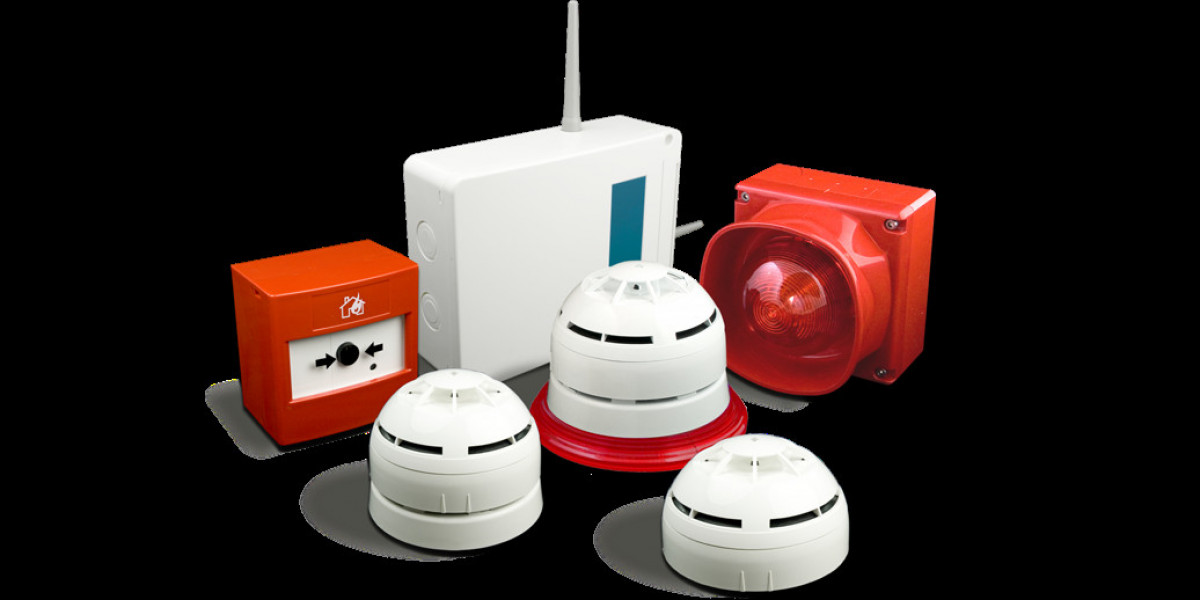The global Fire Detection Market is experiencing a paradigm shift from traditional alarm systems to intelligent, interconnected safety system ecosystems. As urban infrastructure becomes increasingly digitized and complex, organizations and governments are prioritizing smart, integrated solutions that go beyond basic detection. These advanced systems offer real-time data, predictive analytics, seamless integration with building management systems (BMS), and compatibility with Internet of Things (IoT) devices—reshaping how fire safety is approached globally.
From Standalone to Smart Ecosystems
Conventional fire detection relied on isolated smoke or heat sensors connected to basic alarm circuits. While effective for straightforward hazard alerts, they lack real-time responsiveness, remote monitoring, and system-wide coordination. In contrast, intelligent systems are networked and capable of communicating across a wide array of devices and platforms.
These ecosystems include:
Smart sensors that detect not only smoke but also gases, temperature, and humidity levels.
AI-powered control panels that assess data in real time to distinguish between actual threats and false alarms.
Mobile-integrated notification systems that send alerts to smartphones, tablets, and emergency response centers instantly.
By working together, these technologies enhance situational awareness and provide more accurate and actionable responses to potential fire threats.
Drivers Behind the Demand Shift
1. Urbanization and Infrastructure Expansion
Rapid urbanization, especially in Asia-Pacific, Latin America, and the Middle East, has led to the construction of large-scale commercial and residential buildings, transportation hubs, and industrial parks. These facilities require integrated fire safety systems that ensure occupant safety across interconnected zones and vertical spaces.
Smart fire detection ecosystems, which can monitor multiple zones and synchronize with emergency systems, are well-suited to these environments. Their ability to scale and adapt to expanding infrastructure makes them highly desirable in newly developed urban spaces.
2. Need for Centralized Management in Large Facilities
In industries such as healthcare, data centers, and logistics, where multiple facilities are often managed from central locations, having decentralized standalone systems is no longer sufficient. Centralized monitoring and control enabled by interconnected fire detection systems provide consistency, ease of maintenance, and quicker decision-making during emergencies.
3. Compliance and Regulatory Upgrades
Stricter building codes and fire safety regulations around the world are pushing enterprises to adopt advanced systems. In regions like Europe and North America, new mandates encourage the use of smart detection systems capable of fault diagnostics, system logging, and integration with emergency response protocols. Intelligent systems allow for compliance tracking and automated reporting, simplifying regulatory adherence.
Integration with IoT and Smart Technologies
A hallmark of modern fire detection ecosystems is their ability to connect seamlessly with smart devices and networks. IoT plays a pivotal role by allowing continuous data exchange between sensors, alarms, HVAC systems, lighting, surveillance cameras, and access control mechanisms.
For instance:
Smart cameras with thermal imaging can assist in identifying fire sources before they become visible.
IoT smoke detectors can be paired with smart lighting to guide occupants safely during an evacuation.
Connected alarms can trigger suppression systems automatically while simultaneously alerting local fire departments.
This level of automation and interoperability reduces human error and enhances the responsiveness of fire safety infrastructure.
Predictive Capabilities and AI Integration
Predictive analytics are becoming central to fire detection systems. AI and machine learning algorithms are used to interpret sensor data over time, identifying early signs of equipment malfunction, overheating, or irregular chemical reactions. This transition from reactive to proactive safety represents a major leap in risk mitigation.
Benefits of AI integration include:
Minimized false alarms by distinguishing between benign smoke (e.g., cooking) and hazardous conditions.
Early warning of potential electrical faults or overheating in industrial settings.
Customized response protocols based on the severity and location of the threat.
AI-driven analytics not only enhance safety but also improve operational efficiency by reducing unnecessary evacuations and disruptions.
Cloud-Based Control and Remote Access
Another cornerstone of the evolving fire detection landscape is cloud-based control platforms. These allow facility managers and emergency responders to access fire system data from anywhere in real time.
Key advantages include:
Remote diagnostics and maintenance
Centralized command dashboards
Instant alerts and system status updates across multiple properties
Seamless scalability for enterprises with geographically distributed assets
Cloud connectivity ensures system reliability and responsiveness even in times of partial system failure, offering robust continuity of safety operations.
Challenges to Address
While the benefits are significant, several challenges must be overcome:
Cybersecurity Risks: The more connected a system becomes, the greater its vulnerability to hacking or data breaches. Strong encryption and cybersecurity protocols are essential.
Initial Investment Costs: Intelligent systems demand higher upfront investment compared to conventional models, which can be a barrier for smaller businesses.
Training Requirements: Effective use of interconnected systems requires skilled personnel who understand digital interfaces, analytics dashboards, and smart building protocols.
Manufacturers and service providers are addressing these challenges by offering modular solutions, enhanced user training, and built-in cybersecurity measures.
Future Outlook: Toward Fully Autonomous Fire Safety Systems
The evolution toward intelligent fire detection ecosystems is ongoing. The future points toward autonomous systems that integrate drones for threat assessment, robotics for suppression, and real-time AI-based coordination with emergency services. These systems will not only detect but also react, contain, and resolve fire threats with minimal human intervention.
As smart cities, Industry 4.0, and digital infrastructure continue to grow, fire detection will no longer be seen as a standalone requirement, but as an embedded, intelligent layer of safety woven into the fabric of connected living and working spaces.









